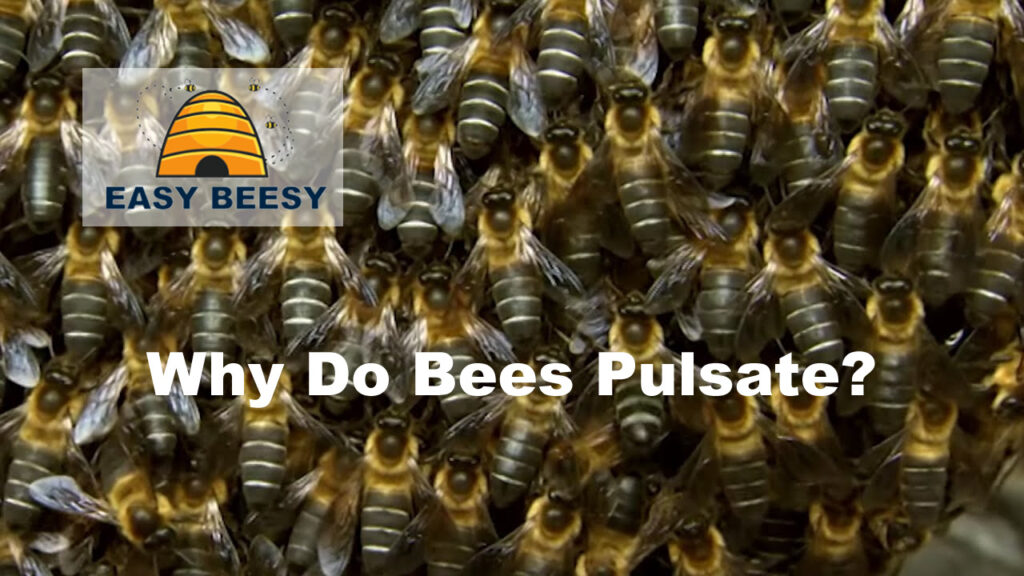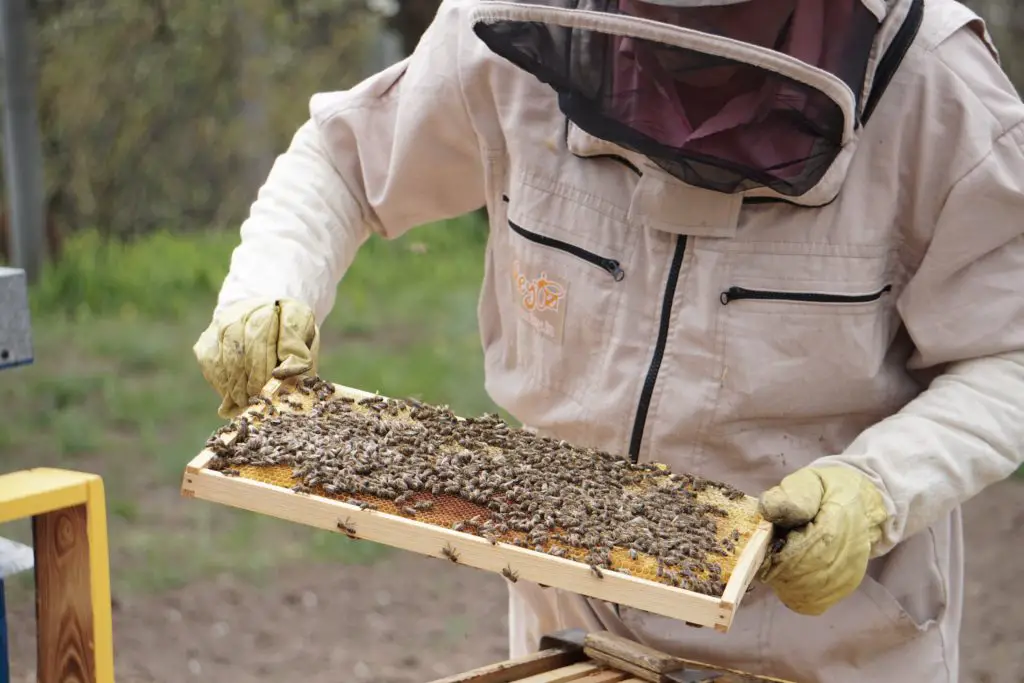Affiliate Disclaimer - As an Amazon Associate I earn from qualifying purchases.
It supports the website. So, Thank you
If you spend some time observing bee-havior then you will see that these amazing little creatures do some weird and wonderful things. One of the things I noticed my bees doing was pulsating and it got me wondering why they do this.
So, I spent some time doing a little research and I found the answer: why do bees pulsate?
If you have noticed your bees pulsating and want to know more about it then this article tells you everything you need to know. I’ll be looking at how bees breathe and what causes this pulsating as well as some quirky ways that our winged friends use to communicate with one another.
Table of Contents
Bee Respiration Causes Pulsating
When you watch a bee, you’ve likely noticed those little pulses and if you aren’t familiar with what they are, you could be fooled into thinking that something was wrong. But this is not the case. Bees actually pulsate because of how they breathe.
The bee contracts the flight muscles in its abdomen as a way of bringing air in and out of the respiratory system. Unlike humans, bees do not have lungs or anything similar so the way that they get oxygen into their bodies is also different.
Instead of lungs, our little friends have a system of tracheal sacs. These are located around the body including the thorax, abdomen, and head. In order to get the oxygen into these sacs, the bee has a series of ‘air holes’ which are called spiracles. There are seven pairs of spiracles located on the bee’s abdomen and a further three pairs on its upper body.
To draw oxygen in, each of these spiracles has a valve and this allows air to flow in and out. When you see the bee pulsating, it’s contracting its muscles to open and close these valves. Pretty cool, right?
However, there is also some speculation that bees will pulsate their bodies in order to generate heat. Bees are cold-blooded animals that rely on heat from the environment to stay warm. But when they get particularly cold, they may increase their activity to boost their body heat.
Pulsing Bees For Communication
When I use the term pulsing to describe the way in which bees sometimes communicate, I use it lightly. What we’re really talking about is a wiggle of the bum which has perplexed scientists for many years. But in the 1950s, they finally discovered the reason for this type of bee ‘pulsating.’
Honey bees perform what is known as a waggle dance and while it might sound adorable, it’s actually an incredibly important form of communication that bees use to tell other bees where the food is at!
Honeybee colonies can get extremely large in number with sometimes thousands of individuals inside a single hive. Each of the bees within the colony has its own job and many of them are responsible for foraging to feed the entire hive. They do this by gathering nectar from flowers but no bee could do this single-handedly.
Communication is key in letting other bees know where there is a viable food source. When one bee performs its waggle dance, this tells the others that there is food and they’ll all head to the same area.
Bees perform this waggle dance inside the hive which is the first thing that tells us just how intelligent they are. They’ll position themselves vertically on the comb and perform the dance moving in a figure of eight. This translates to other bees as a straight line which directly points to the source of food. Even more astonishing is that the bee will adjust its angle and this tells the other bees the distance of the food source in comparison to the hive; I told you they were smart!
Wing Pulsating
There is a common consensus that bees use their waggle dance as a way of communicating but research at Nottingham Trent University has shown that this may not be the case. In fact, their research suggested that the number of times a bee was performing its wiggles and bumps was far too many to be telling other bees where food can be found.
Instead, the new belief is that bees might be using this dance when they are surprised. But they aren’t saying that the original waggle dance theory was incorrect; they’re telling us that new findings suggest variations on it which need to be interpreted differently…let me explain.
When bees perform their regular waggle dance, they do so by moving the backs of their bodies. But in these new observations within the hive at night, researchers noticed the bees also making micro vibrations with their wings which resembles a pulse.
How often the bees were doing this clearly shows that they weren’t using it as part of their foraging communication. Moreover, there’s no need to show others where food is when they’re in the hive, the dances typically take place in the daytime when the bees are out and about.
But when there was a knock on the side of the hive or the bees bumped into one another within the hive, this is when the wing pulsating happened. It’s pretty cute to consider the notion that this is a bee’s reaction when you make it jump.
But there’s more to it than that. These wing pulsations serve as a way of telling other members of the hive that there may be danger and that they need to flee the hive. Of course, every time a bee bumps into another one and pulses its wing, your entire colony isn’t going to fly away; bees are much more intelligent than to react at the smallest pulse.
Conclusion
Bees have long mystified humans with their strange behavior but when you look closely and pay attention, it’s not difficult to see why they do the things they do.
You’ll often see bees pulsating at the abdomen and this can look quite alarming. Many people think that something is wrong with the bee but in actual fact, it’s just breathing. Since bees do not have lungs, they breathe in a very different manner to humans, contracting their flight muscles in order to open and close valves that allow air to flow through their bodies.
Moreover, bees use various forms of pulsating to communicate with other members of the hive. This may be to tell them where food is located but can also be done to signal distress or alarm. So, if you have ever asked yourself why bees pulsate, now you know!




